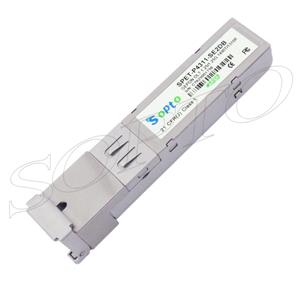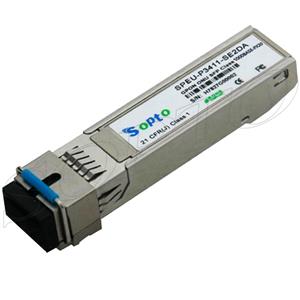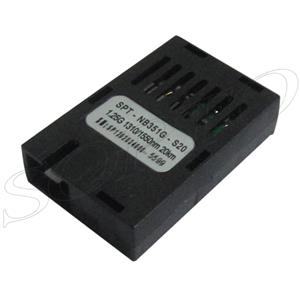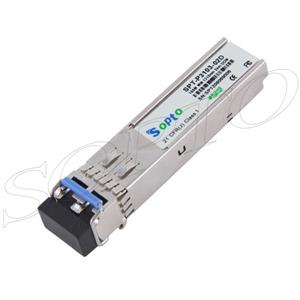-

- Sopto Home
-

- Special Topic
-

- Module Knowledge
-

- MSA Module Enables for High-Speed Optical Ethernet
Module Knowledge
- Tips for Buying 10G XFP Transceivers
- XFP Transceivers for Telecommunications
- Three Types of Ethernet SFP Transceiver Modules Introduction
- Info about High Density CXP Optical Module
- Multipurpose CFP Optical Modules
- Info about CFP Management Interface
- SFP+ Transceivers Short Range Module Overview
- 3 Reasons Every Network Needs GLC-LH-SM Transceiver
- Is the GLC-SX-MM Transceiver Right for Your Switch?
SOPTO Special Topic
Certificate



Guarantee
Except products belongs to Bargain Shop section, all products are warranted by SOPTO only to purchasers for resale or for use in business or original equipment manufacturer, against defects in workmanship or materials under normal use (consumables, normal tear and wear excluded) for one year after date of purchase from SOPTO, unless otherwise stated...
Return Policies
Defective products will be accepted for exchange, at our discretion, within 14 days from receipt. Buyer might be requested to return the defective products to SOPTO for verification or authorized service location, as SOPTO designated, shipping costs prepaid. .....
Applications
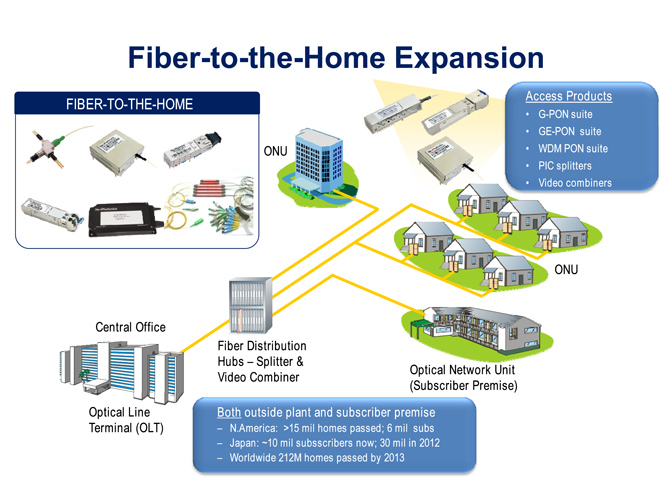 Fiber Optic Transceiver Modules can be applied to these occasions or fields.
Fiber Optic Transceiver Modules can be applied to these occasions or fields.
Ethernet
IPTV
FTTX
Security
Video Monitor
SDH/SONET
Data Communication
Storage Area Networks
SOPTO Products
- Fiber Optic Transceiver Module
- High Speed Cable
- Fiber Optical Cable
- Fiber Optical Patch Cords
- Splitter CWDM DWDM
- PON Solution
- FTTH Box ODF Closure
- PCI-E Network Card
- Network Cables
- Fiber Optical Adapter
- Fiber Optical Attenuator
- Fiber Media Converter
- PDH Multiplexers
- Protocol Converter
- Digital Video Multiplexer
- Fiber Optical Tools
- Compatible
Performance Feature
Stable
Low cost
Small size
Economic
Dust-proof
High speed
Hot-pluggable
Good EMI, EMC
Wide appliaction field
DDM function available
Long transmission distance
Good Anti-static performance
Module Knowledge
Recommended
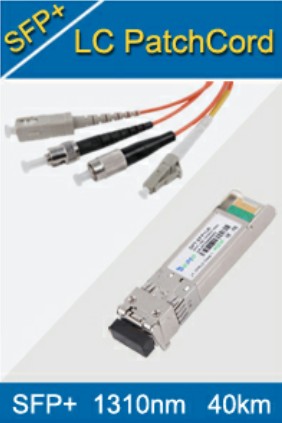
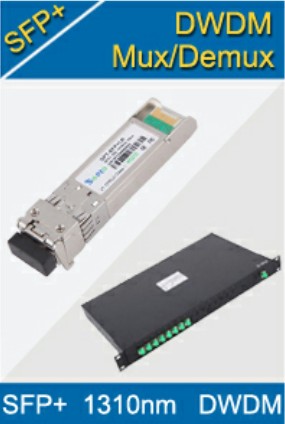
MSA Module Enables for High-Speed Optical Ethernet
Every time Ethernet increases by a factor of ten, or Fibre Channel accelerates by a factor of four, analysts carefully probe the pricing factors involved in determining the slope of user acceptance. The arrival of 10G Ethernet was slowed significantly by the price of some semiconductor logic components, and by the price of implementation in line cards. At other times, the shifting price differentials in multimode vs. single-mode fiber, or pricing of different laser types (VCSEL, DFB, Fabry-Perot) has been named as a key factor in determining how quickly fiber networks scale to a new speed grade, whether in LAN, SAN, MAN, or WAN.
What is rarely considered, however, is how the optical transceiver module helps determine the viability of new speeds of Ethernet, OTN, and Fibre Channel. This has been particularly true since the arrival of Multi-Source Agreements (MSAs), in which multiple manufacturing companies agree to conform to a standard electrical and mechanical form factor, without having to take the form factor through an official standards body. Over the past decade, the MSA process has helped accelerate the acceptance of modules such as SFP+ and CFP.
When 10G Ethernet line cards first hit the market early in the century, OEMs had several choices of MSAs. Modules such as XFP and XENPAK integrate more signal-conditioning circuitry inside the module, while the enhanced version of SFP, known as SFP+, provides a smaller module in exchange for implementing more circuits on the motherboard or line card. This helped lower costs in two ways. The availability of multiple MSAs gives designers a choice on implementation while still providing the benefits of a common form factor. At the same time, the multiple MSAs allow OEMs to tailor the transceiver solution to the radius of the optical network, the type of fiber (MMF or SMF) employed, and the type of laser used in the transceiver.
After the CFP Multi-Source Agreement group was formed in 2009, user demand drove an evolutionary path from CFP to CFP2 to CFP4,”, reflecting a way to transition the size of modules as networks shifted from 40Gbits/sec to 100 Gbits/sec. Cisco threw a spanner in the works in late 2012, as it began talking about its proprietary CPAK option which could obsolete the CFP2. Electrical interfaces of the standard CFP modules supported a 10 channel x 10-Gbit interface, though the optical interface for the modules could support either 10 x 10G or 4 x 25G. These modules all are intended for fiber distances of 100 meters or greater, compared to the CXP and QSFP modules, intended for short-reach solutions.
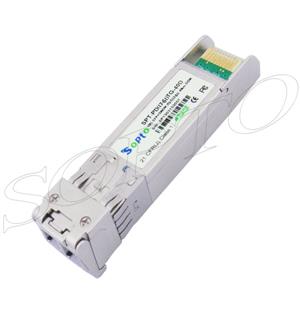
40KM DWDM SFP+ Optical Transceiver
Cisco’s CPAK is intended to replace CFP2 with a solution that is much lower in power, less than 7W in many cases. The specs have not been officially announced, but the mere hints that Cisco is moving in this direction have caused some module vendors, such as Sumitomo and Avago, to consider a leap directly to the CFP4, the smallest of the planned C-factor modules.
Meanwhile, however, module vendors already are making advanced plans to prepare MSAs for 400G Ethernet. Earlier this year, IEEE high-speed study group members rejected the concept of leaping directly from 100G to 1-Tbit Ethernet, because of the length of time it would take to develop the terabit standard. Instead, 400G Ethernet was seen as an easier stepping stone. This made a lot of sense, as both physical-layer chip vendors and FPGA vendors already were developing 400G Medium Access Control chips for 400G.
Last spring at the Optical Fibers in Communications conference, major module vendors and users including Brocade, IBM, Avago, Juniper, and son , formed the CDFP coalition, which would define a module with 16 transmit and 16 receive channels, appropriate for use with either active optical, or active or passive copper cabling. In theory, this should provide a path for front-panel physical form factors and for channel multiplexing for 400G Ethernet. In practice, a leading OEM like Cisco could bring to market a module that bypasses the MSA process entirely.
The trickiest prediction to make is how the MSA process aids the move to 40G, 100G, and 400G standards. For 100G, some OEMs say that the preservation of 10 x 10G and 4 x 25G channels provides too many choices, but 40G Ethernet used 10G channels, so it made sense to offer a choice of channel bandwidth for those transitioning from 40G to 100G Ethernet.
There are even some optical industry executives who say that the MSA coalition effort is a bad idea, because it squeezes the semiconductor vendor and the optical line card vendor too much, driving down prices when larger module manufacturers can enter a market with a common form factor. The obvious response to this type of criticism is that without the price-bombing of components, the arrival of 40G, 100G, and 400G follow-ons to 10G Ethernet would take even longer than it has taken over the last decade.
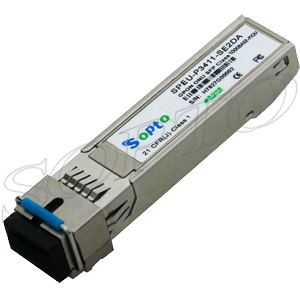
It seems safe to predict at this point that the 10 x 10G and 4 x 25G channelization methods will coexist in the near term, but that 16 x 25G will be a preferred channelization for 400G Ethernet. It seems equally safe to bet that the multi-vendor MSA process will continue to dominate the optical transceiver world, though key OEMs like Cisco may offer more special packages like CPAK. At the end of the day, the optical transceiver module will play as important a role in the cost of optical networking as the choice of fiber and the choice of laser.
For more info, please browse our website. For purchasing fiber optic assembly products, please contact a Sopto representative by calling 86-755-36946668, or by sending an email to info@sopto.com.
You May Like:





-180x180.JPG)

